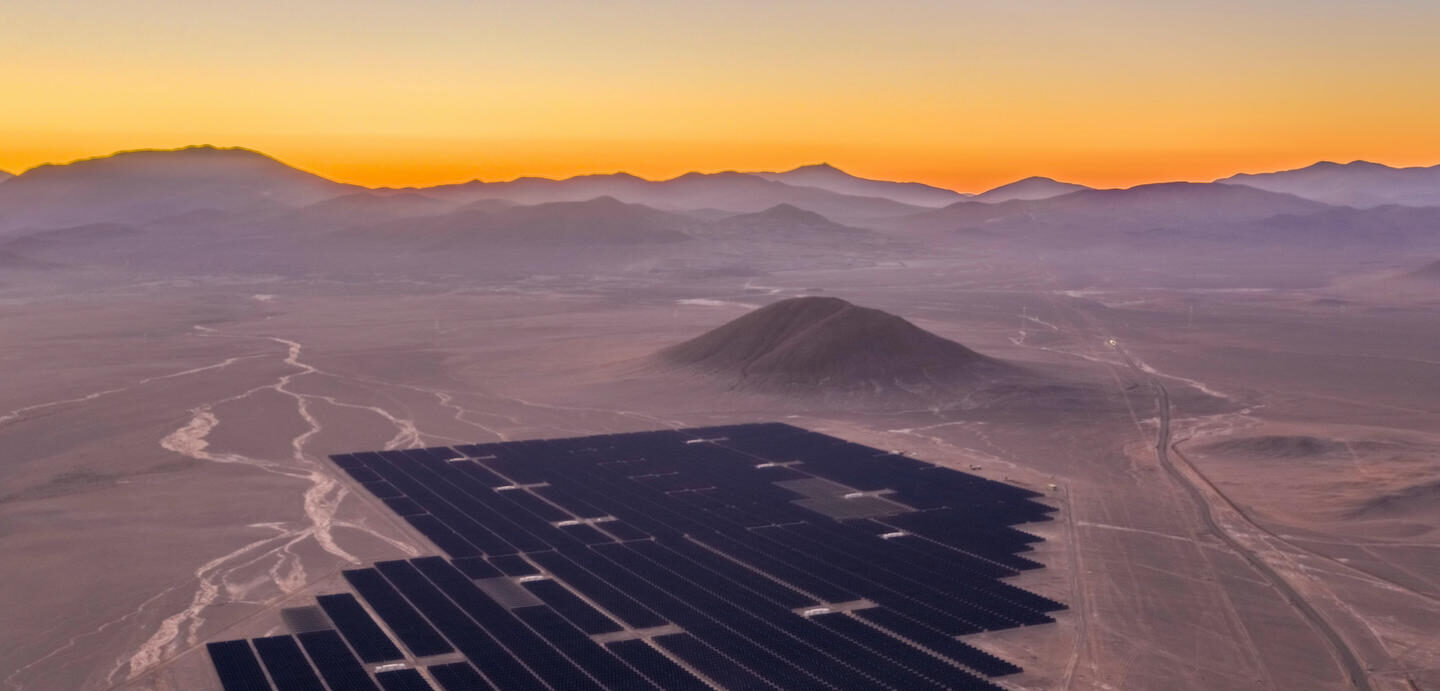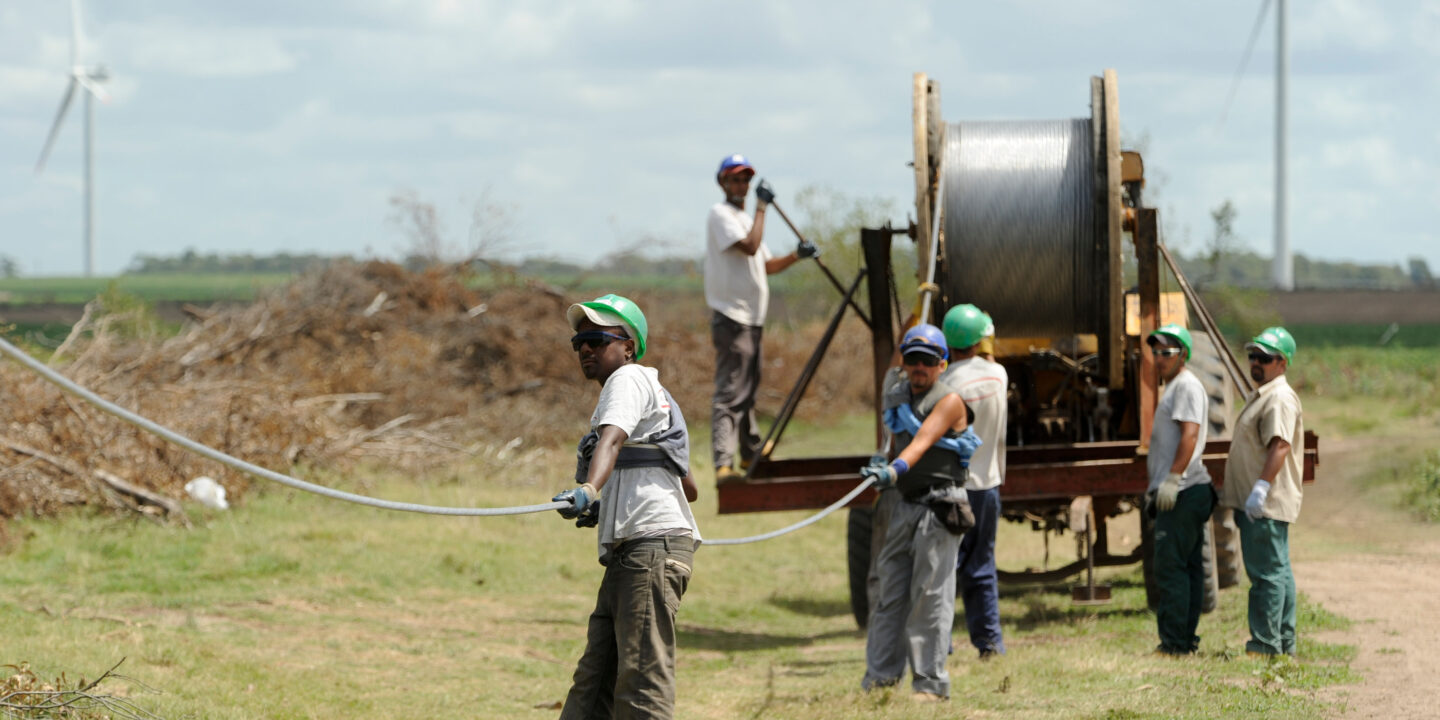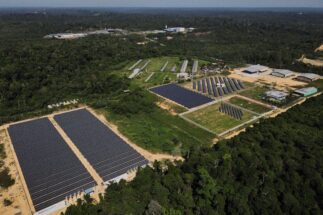Globally, emerging economies are expected to account for most of the growth in electricity demand in the coming decades. Latin America is no exception, with a projected growth rate of 2% per year until 2040. The answer to meeting this demand lies not only in generating more energy, but also in efficient energy management.
The concept of a “smart grid” represents the new paradigm in such management and control of energy networks. These systems see modern information and communication technologies incorporated into the traditional electricity grid, allowing real-time monitoring of the state of the grid, helping to avoid outages and energy losses.
The smart grid also incorporates the use of smart meters in the homes of consumers. Like traditional meters, smart meters measure energy use; the main difference is that they automatically send this information back to the utility via wireless networks. This makes it possible to track service and monitor energy consumption, with the user able to see how much energy they are using and how much it costs, allowing for better control of energy use.
In addition, smart meters are bi-directional, so that, in addition to receiving energy, it is also possible to generate energy and then sell the surplus to the grid, for example by installing solar panels on the roof of a home.
“Society is becoming increasingly digitalised and dependent on electricity. So the need for reliable and permanently available systems is growing all the time,” says Gustavo Fernández Sosa, an independent energy consultant from Uruguay. “Digital systems are already in many aspects of our lives, now also in the electricity sector.”
Latin America’s electricity grid
As with most infrastructure in the region, Latin America’s networks suffer from a lack of investment, which is reflected in poor service, says Jeremy Martin, Vice President for Energy & Sustainability at the Institute of the Americas. The challenges are many, he adds, starting with transmission lines.

The region already has outstanding renewable energy resources, which have largely been developed in the last decade. Due to their characteristics, solar and wind resources are often located far from the main urban centres, which requires strong transmission lines covering long distances.
A common denominator in Latin American countries is the saturation of these lines – meaning that further expansion of renewable energies is held back until there is greater investment in increasing their capacity. This is compounded by energy losses, which are as high as 15% in Latin America – higher than in other developing regions.
“On the transmission side, the networks are modern but they are at their limits,” says Patricio Donato, a researcher at Argentina’s National Scientific and Technical Research Council (CONICET). “The problem is also in distribution, with infrastructure deficits. This is where the concept of smart grids can make a big difference.”
Currently, the transition to smart grids is mainly taking place in more developed countries, such as those in the European Union, as well as in the larger economies in Asia. In Latin America, there has been progress in countries such as Colombia, Uruguay and Mexico but it has not yet been extensive.
Uruguay is one of the top performers, with 600,000 smart meters – imported from China – currently in operation, representing 60% of energy users. The target is to reach 100% in the next two years. The upgrade to using these meters does not involve a cost for the user.
Discussing the country’s successes to date, Fernández Sosa explains that conventional meters began to no longer be purchased to replace ones that were failing, with a smart meter installed instead. “Uruguay benefited from the existing deployment of its telecommunications network, which allowed smart meters to communicate with control centres,” he adds.
In Mexico, there are about 2 million smart meters in use, representing 5% of the country’s total meters, with the government expecting to reach 25 million by 2025. In Colombia, the government expects to have 75% of households with smart meters by 2030, according to an official resolution.
In 2021, Costa Rica published an official national strategy for smart grids, developed by the Ministry of Environment and Energy. Framed within its national decarbonisation plan, the strategy seeks to generate a flexible, smart and low-cost electricity system that takes advantage of technological innovation.
Meanwhile, in Chile, plans to switch most consumers to smart meters from 2018 suffered a setback when news that the meters would be paid for by users generated a massive backlash. The government backtracked on its plans and the switch is now voluntary.
The expansion of distributed energy
While smart meters are a central component of a smart grid, they are not the only one. Distributed generation – smaller-scale, renewable energy generated by users themselves for their own use, or to sell to the electricity system – is also taking its first steps in Latin America.
There is currently an estimated 4.4 GW of installed distributed generation capacity in the region, with Brazil being the most advanced country, reaching 1.2 GW thanks to a regulation that enables several benefits for project developers. Chile has also taken important steps, with 1 GW of installed distributed capacity, followed by Mexico, at a smaller scale.

The main obstacles to expanding the market today are a lack of solid regulation, difficult access to financing, inflexible grids and inadequate user payment schemes, according to the experts Diálogo Chino consulted. This is compounded by the opposition from large energy transmission and distribution companies to subsidies benefiting smaller-scale generation.
Distributed generation can serve many purposes, but the primary motives are energy self-sufficiency and the sale of energy to the grid. A domestic or commercial user builds a solar or wind power generator to meet their energy needs, but when generation exceeds their demand, they can sell to the grid.
In Colombia, Gabriel Ordonez, a researcher at the Universidad Industrial de Santander, carried out a smart grid pilot that included installing solar panels on the terrace of a university building along with an automated energy system that detects the need to turn on lights or heating, among other uses.
“In addition to having worked on the faculty building, we have a pilot house where we are testing smart grid materials,” says Ordonez. “We are among several universities that have experimented with the use of a smart grid in Colombia, and we are waiting for the regulation to advance in order to then scale up its use.”
The future of energy in Latin America
Advancing smart grids will be important for Latin America as part of its energy transition away from fossil fuels. A smart grid would allow increasingly large proportions of renewable energy to be integrated into the national energy system, as well as reliably powering a large fleet of electric vehicles.
The challenge will be long-term planning, accompanied by funding from governments and the private sector, the experts consulted agree. For the time being, it is estimated that South American utilities will invest US$18 billion in developing smart grids over the next decade.
If we delay, it will be more expensive. Starting with smart meters can be the first step.
A growing trend in the transmission and distribution market in Latin America is the involvement of Chinese companies. In Brazil, China’s state-owned utility State Grid has acquired several companies since 2010, and been awarded contracts for the construction of lines. The China Three Gorges Corporation, another state-owned power company, has assets in Ecuador, Bolivia, Chile and Brazil.
Such investment, particularly directed towards smart grids, may be much needed to accelerate transitions in the region, with experts warning of the future costs of delays. “The discussion on smart grids in Latin America needs to be promoted. It is the future, we will converge there in the long run. But urgent problems and economic and social crises are still holding us back,” Donato said. “If we delay, it will be more expensive. Starting with smart meters can be the first step.”









